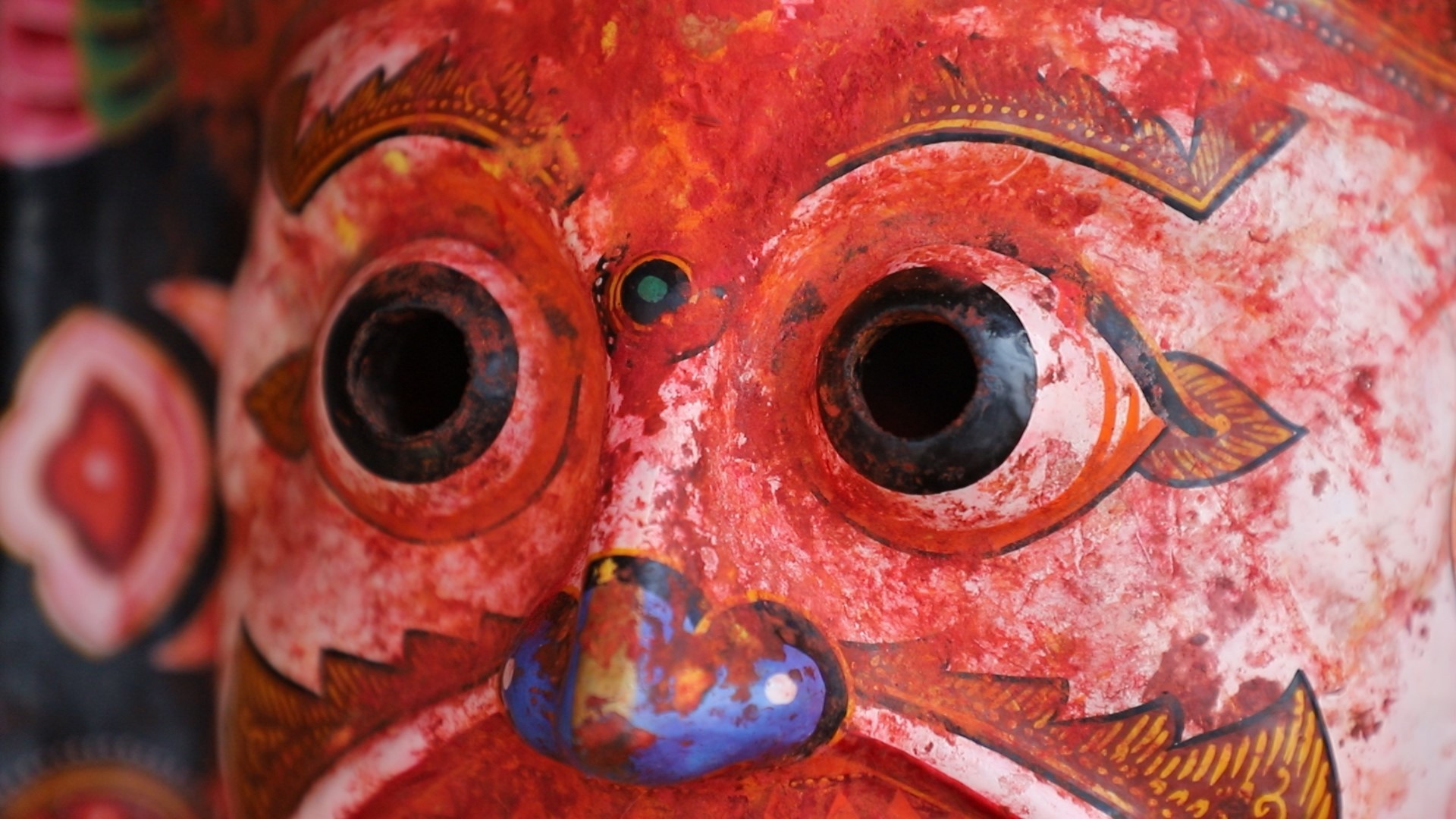The Thasa of Kathmandu Valley

Research by: Lok Chitrakar
Image credit: Amuse Group
The art of woodblock printing in Kathmandu Valley reflects one of its greatest cultural ascendency in premodern Nepal. Today most people ordinarily associate printmaking with the printing press and mass-produced books and newspapers. However, it could be quite intriguing to note that the art of printmaking need not be related to journalism, mass communication, posters, or advertisements. The artistic skills developed in Kathmandu Valley’s ancient cities permeate through Nevār society while influencing neighboring non-Nevār communities. Among numerous cultural traditions developed in the valley, printmaking stands as a distinct art form practiced by the Chitrakar communities.
Days before some of the festivals, vendors selling colorful paper prints on the market floors appear in the teeming city bazaars like Asan (Kathmandu), Mangalbazaar (Lalitpur), and Sukuldhoka (Bhaktapur). Most people hardly notice these tiny shops, but those who require them for performing pūjā diligently buy them. These multi-colored pictures are in fact hand-printed and painted figures of various deities that are unlike the mass-produced offset prints from India.

A thin, black, uniform print on white paper may represent Nāg-Nāginī (a snake pair) or Varuṇa Devatā (the god of water). These prints are used during the Nāg-Pañchamī festival. Other prints include that of lord Gaṇesha for Ganesh Chaturthi Pūjā, an iconic face of a cow for the Gai Jātrā procession, goddess Bhagavatī for the Dashain festival, and goddess Lakṣmī for Lakṣmī Pūjā. Some prints such as the Kijā Pūjā picture for Bhāi Tikā, that of goddess Sarasvatī weaving a yarn made for Sarasvatī Pūjā, and of lord Bhimsen for Mahā Aṣṭamī are rarely used nowadays.
The wooden block is termed as ‘thāsā’ or ‘palaṁ’. ‘Thāsā’ is a Nevār word, meaning a printing mold or block. To prepare this wooden block, a hardwood, called ‘chaap’ (Himalayan Michaelia champaca) is used. ‘Chaap’ is used for its tensile strength as well as soft grain. In some wooden blocks, both sides are found to be carved. This may be because chaap wood was difficult to find. Since carving a particular design takes time, artists even today exchange their blocks. To prepare the black ink for the outline, soot from the underside of fired cooking utensils is used. Powdered soot is then poured into a clay pot. Sharesh is added as a binder and mixed well using a wooden stick.

For other colors, fabric dyes are used. For the color green, an acidic solution from a citrus fruit called Jhyāmsī is used. This prevents the color from fading away. Since the red pigment needs to be very bright and shiny, it is stored for a long time mixed with the sharesh as a binder. A bright red color is not naturally available, so a rose-colored dye and vermillion-orange are mixed in equal proportions.
Chet kumari Chitrakar from Bhaktapur is among the last remaining women who make hand-painted prints for the city’s many festivals. Chet Kumari learned the art from her in-laws but after their passing, she decided to take up the mantle and continue the family tradition. Even while Chet kumari is busy preparing prints and paintings almost all year long, their sale does not ensure a steady income.

Block-printed pictures are skillfully produced but the value of the craft has faded over time. This is evidenced by the popularity of imported readymade offset prints of gods and goddesses that have completely overtaken the market during festivals. The competition is quite out of reach given the comparative time-consuming process and labor required to make hand-painted posters. With declining profit and increasing modernization, an art practice that is rooted in societal belief and faith is at the risk of discontinuity.
Despite the odds, Chetkumari Chitrakar continues the art of block printing out of devotion and respect to her family tradition. Her perseverance reflects the attachments, values, and a sense of identity created through the process of cultural expressions.











Designed & Developed by: Curves n' Colors | Visual identity by: Wkshps




